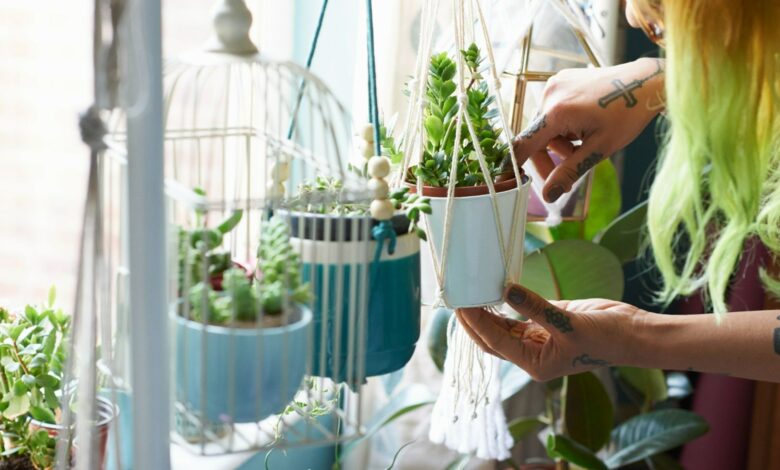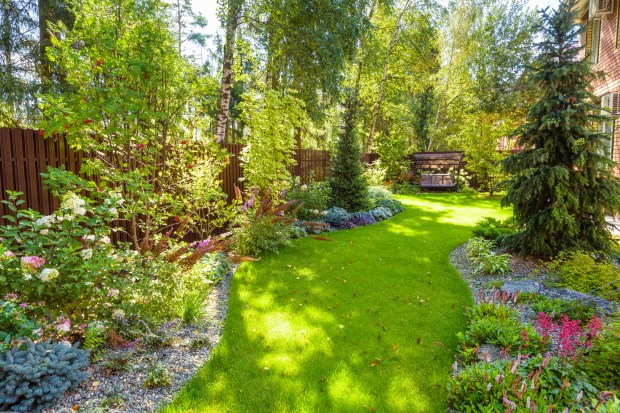The Surprising Trick to Keeping Your Houseplants Alive While on Vacation


THERE’S nothing more dismal than coming home from vacation to find all your houseplants dead.
But before you ask the nosy neighbors to water your plants, there is another solution.
According to gardening expert Craig Wilson, founder of Gardeners Dream, you can keep your plants alive by putting them outside when you’re away.
He says: “Many plants that are known as houseplants can also thrive outdoors.
“As the UK is usually quite likely to experience rain, moving your houseplants into the garden while you’re on holiday is a good way to keep them watered and alive.
“Moving your houseplants to the garden while you’re away not only ensures they get water while you’re away, but moving them outside can have several benefits.
“Fresh air flowing over the stems and leaves allows carbon dioxide to be transported to the leaves.
“Plants use this CO2 along with light and water for photosynthesis, which helps create the sugars they need to grow and recover.
“There is also a higher quality of light outside, which makes a move outside even more valuable for this process.
“This same airflow helps keep the leaves dry, which helps prevent fungal growth and protects the plant from disease.”
Which popular houseplants can you put outside when you are on holiday?
Snake Plant
Sansevieria, also known as the sansevieria, is native to a warm and dry climate. It may therefore be better to place the plant outside in the summer than inside.
However, they do need to get used to the change of environment before you put them outside, so keep this in mind in the run-up to your holiday.
To survive they need a night temperature of consistently 13 degrees Celsius or higher and they should be placed in a spot where they get plenty of natural sunlight, but not too much direct sunlight, as direct sunlight can burn the leaves.”
Peace Lily
Like the Sansevieria, the Peace Lily needs a night temperature that is consistently above 13 degrees Celsius to thrive outdoors.
Peace lilies should be placed in a shady spot in the garden, as the leaves will burn in direct sunlight.
How to Get Rid of Dead Flowers on Different Plants

Deadheading – removing dead or wilted flowers from plants – is an important July gardening chore. It is done to keep plants looking attractive and to encourage more blooms.
The experts at the Royal Horticultural Society have explained exactly how to prune certain plants this July, so you can have a beautiful garden all summer long…
Bedding plants
Tender plants grown in beds, pots and hanging baskets respond well to the removal of faded flowers.
“The spent flowers of argyranthemum, heliotrope, pansies, polyanthus and petunias can be removed with your finger and thumb by pinching off the flower and stem,” according to the RHS.
Pelargoniums
The RHS advises pinching off individual flowers and then using secateurs to remove whole clusters and the long flower stalk down to just above where it joins the main stem.
“Another option is to grab the flower stem and pull it down, away from the main stem. The stem should then snap cleanly,” the experts add.
Roses
Removing faded roses is very easy by carefully breaking off the faded flowers and breaking off the stem just below the flower head.
“This method will produce more flowers faster than cutting the plant with pruning shears,” the experts say.
Shrubs
“The height of a shrub may make deadheading impractical, but examples of shrubs that benefit from deadheading include rhododendrons (and azaleas), camellias, lilacs (Syringa) and tree peonies,” the RHS says.
Use your finger and thumb to snip or pluck off each dead flower head where it attaches to the stem, or use pruning shears to cut just below the flower head – but be careful not to damage the new growth buds directly below the flower
Climbers
“Cut back faded climbing plants, especially Eccremocarpus, as this plant produces seed pods quickly,” the experts advised.
“Most have sturdy stems, so use pruning shears to cut the stems off at the base.”
Peace lilies are sensitive to dehydration and need plenty of water to prevent them from drooping.
We can almost guarantee that it will rain at least once a week. However, if the weather in the UK doesn’t look like it will be wet enough, you can add a drip irrigation system to your peace lily. This will ensure that the soil stays moist while you are away.
Monstera
Monsteras like a warm, dry climate, so you can put them outside if you are away in the summer, as long as the temperature stays warm.
They don’t usually need regular watering, but an occasional British summer shower will prevent the soil from drying out too much while you’re away. Make sure you place your monstera in a shady or semi-shady spot to prevent this.
Monsteras are natural climbers, so depending on how long you’re away, you’ll need to be careful where you place it.
They do tend to climb vertically, so if you are going away for a longer period of time, make sure you give them a moss stick to place in the middle of the pot to prevent them from climbing anything in your garden, as this will make it tricky to get them back inside! If you are only going away for a week or two, this shouldn’t be a problem.
Ferns
In many places, ferns grow naturally outdoors, so you can rest assured that there is no harm in taking an indoor fern outside.
Just make sure you put it in a semi-shaded spot. Ferns also like moist soil, so if you don’t get much rain while you’re away, an extra drip irrigation might be a good idea to keep the soil moist between rain showers.




